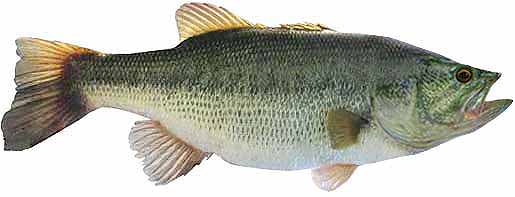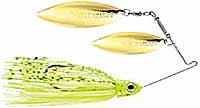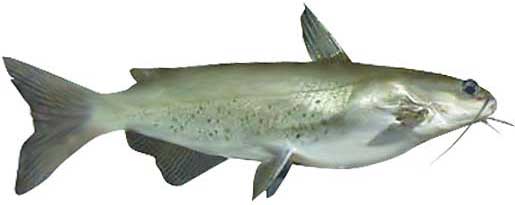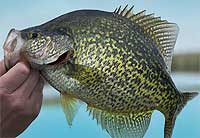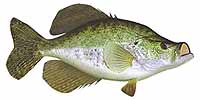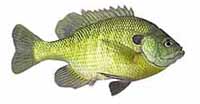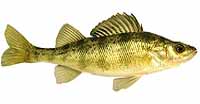Fishing Report For West Branch Lake, OH
By Rick Seaman
Last updated on .
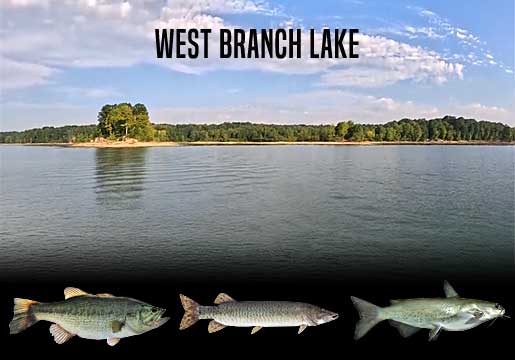
Fishing Reports
Popular Fish Species West Branch Lake, OH
Largemouth Bass
Current Report: Fair To Good
FALL. Now that Fall has arrived, bass here have moved shallow, following schools of baitfish into coves and shallow bays around 6 to 15 feet of water. There are plenty of catchable bass in West Branch Lake, ranging in size from barely catchable to 3 pounds, with reports of an occasional, larger one showing up. Vibrating jigs work well around vegetation as well as along rip-rap shorelines. Around rocks and rip rap I like mid-range crankbaits, like the Rapala DT-6, in virtually any color pattern. Currently topwater, jerkbaits, crankbaits, and slow-rolled spinnerbaits are catching most of the bass. Later in Fall, as deeper water cools, bait and bass move out to ledges, channel edges, points and humps where flutter spoons, jigs and drop shots are often good choices in 15 to 30 feet of water.
WINTER. Winter will isolate largemouth around slightly deeper structure, flats, points and creek channels. They can be found from 15 to 30 feet deep. Here they hold, feeding less frequently, awaiting warmer water to return in Spring. Slow presentations are key to getting bites.
SPRING. Once water temperatures rise into the low 60's, largemouth will move from deep wintering holes, to shallower water nearby spawning areas. Vibrating jigs, jerkbaits and spinnerbaits typically get bites just away from the shoreline. At this time they are feeding aggressively in about 5 to 15 feet of water, and preparing for the spawn. Once water warms into the mid to high 60's, they will move into 4 to 6 feet of water, and create nests, then lay their eggs. Immediately afterwards, females move to deeper water and males remain to guard the eggs, and then the fry. After a couple weeks, the males also move to slightly deeper water. Deep-diving crankbaits, vibrating jigs, plastic worms and swimbaits are catching bass during this period.
SUMMER. Water temperatures will warm considerably in Summer. Bass will feed shallow, early and late in the day, where they will be caught in 5 to 12 feet of water. Topwater, square-bill crankbaits and spinnerbaits. Wacky-rigged stick worms always catch finicky bass when the bite is slow. Largemouth bass here feed on gizzard shad, threadfin shad, small sunfish and crawfish. During the hotter parts of the day, they are being caught on points, channel edges, and ledges 15 to 25 feet deep.
Muskie
Current Report: Good To Very Good
FALL. Considered by many avid muskie anglers to be the best time to fish for muskie, Fall finds these predators back in the shallows feeding heavily in preparation for winter. Muskie in the 32" to 36" range are not uncommon on West Branch Lake. Locals report that there are plenty of these feisty creatures throughout the lake, and they are quite aggressive when feeding. Trolling is a preferred method here, especially across points, the edges of flats, and along the edge of the river channel. 10 to 25 feet of water is where most muskie are being caught, with warm afternoons being the best time to focus on 10 feet deep structure. The Mepps Musky Killer Tandem Bucktail, in larger sizes, is a popular lure for trolling. Noisy, flashy, and bright color lures are ideal during this time as they are quite aggressive. Jerkbaits and bass assassins are also a good choice.
WINTER. As Winter chills the water, muskie move deeper and hold on structure in 20 to 35 feet of water. Points, deep weedbeds, drop-offs, channel edges and corners around the mouths of rivers are good places to find them this time of year. Ice fishing can be productive when the ice is safe, but muskie are being caught all through cold-winter season. Cold water causes muskie to be less active in winter, due to slowed metabolism. Slow moving, or motionless presentations are in order. Jigging spoons, ciscoes, shiners and suckers are favorites of muskie enthusiasts.
SPRING. Muskie move from their deep wintering habitat into shallow bays and flats for Spring spawning. They prowl 8 to 20 feet deep, once water temperatures get into the 50's. Noisy, flashy, and bright color lures are ideal during this time as they are very aggressive. After the spawn is over and water temperatures rise, concentrate on weed lines, and drop-offs along the edges of weedy flats 4 to 15 feet deep. Big spinners, bass assassins, and Johnson spoons will all attract hungry muskie.
SUMMER. Early and late in the day, muskie cruise shallower cover in search of food in 6 to 15 feet of water. During mid day they prefer the cooler water 15 to 30 feet deep. Ledges, reefs, weedbeds, islands and channel edges are the primary areas to find muskie during the warmer months of Summer. Some of the larger muskie may also suspend in open water, just outside these areas. Trolling or drift fishing reportedly produces some nice catches, using spoons, big spinners and deep diving crankbaits.
Channel Catfish
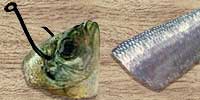

Current Report: Fair To Good
FALL. Fall is one of the better times of year for catching channel catfish. According to reports by local catfish enthusiasts, nightcrawlers and cut bait are both popular for catching channel cats at West Branch Lake. Early in Fall they cruise the 10 to 20 feet deep shallows, in search of food. Later, in the season they migrate away from the shallows and current, to moderately deep flats and channel edges on the main body of the lake. They can typically be found from 8 to 15 feet deep. Fishing for channel catfish is often productive around any kind of structure. Road beds, creek channels and rocky points are all good places to begin. Drift fishing or slow-trolling baits along mid-depth structure is popular and generally productive. Use a slip sinker or Carolina rig setup. Use cut bait, nightcrawlers, shrimp or prepared baits. They remain in these areas and feed aggressively in preparation for Winter.
WINTER. In Winter, the channel cats gather in deep holes and go virtually dormant, especially if water cools into the 40's. They hole up in pockets, deeper channels, ledges, and the basin areas from 20 to 30 feet deep and await warmer water. Slow presentations, especially cut bait, can still entice strikes. Often during mid day, through the afternoon, anglers are catching them a bit shallower on the same structure.
SPRING. In Spring, when water temperatures rise into the high 40's, channel catfish start their migration into coves and up river. Early in the season, look for them in 12 to 20 feet of water. They hold here, and feed aggressively, around relatively shallow cover until water warms into the mid 70's, at which time they begin the spawn process. Anglers are using slip sinkers, 3-way rigs, or Carolina rigs to get, and keep, the bait close to the bottom. Later in Spring, focus on shallower flats into late evening.
SUMMER. In Summer, slow-moving water, at the river end of the lake may draw catfish to feed. Otherwise they are scattering, locating cover in slightly cooler water. Reports indicate the most successful anglers are using nightcrawlers, cut bait, minnows or shrimp. Most channel cats hold in 15 to 30 feet during the day, and 5 to 12 feet during the night. Fishing from late in the day until midnight produces some of the best results, as this is their prime feeding time.
Fishing Video
Fish species to fish for...
Guide to fishing for largemouth bass, smallmouth bass, spotted bass, channel catfish, black crappie, white crappie, walleye, bluegill, yellow perch, muskie, northern pike, sauger and saugeye at West Branch Lake in Ohio.
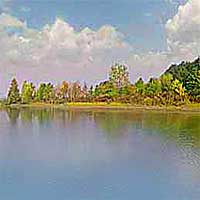 Just southeast of Cleveland, lies West Branch Lake. This is a 2,300-acre lake with 40 miles of wooded shoreline. It offers excellent fishing for muskie, walleye, crappie, largemouth bass, bluegill, and channel catfish. Several boat ramps make easy access for fishing boats, kayaks and canoes.
Just southeast of Cleveland, lies West Branch Lake. This is a 2,300-acre lake with 40 miles of wooded shoreline. It offers excellent fishing for muskie, walleye, crappie, largemouth bass, bluegill, and channel catfish. Several boat ramps make easy access for fishing boats, kayaks and canoes.
Primary fish species to catch
Click images for fishing tips and details about each species.
Today's Weather & Forecast
Fishing Boat Rentals
Click here for fishing boat rentals.
Public Boat Launch Ramps & Landings
Click here for boat ramps.
Marinas
Click here for marinas.
Fishing License
Click here for a Ohio Fishing License.
Map - Fishing & Access
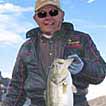 Rick Seaman is a fishing enthusiast with over five decades of fishing experience, a retired tournament fisherman, author of numerous published articles on fishing, and co-author of the book "Bass Fishing - It's not WHAT you throw, It's WHERE you throw it".
Rick Seaman is a fishing enthusiast with over five decades of fishing experience, a retired tournament fisherman, author of numerous published articles on fishing, and co-author of the book "Bass Fishing - It's not WHAT you throw, It's WHERE you throw it".
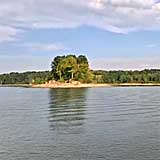 Contact Information
Contact Information
West Branch Marina
8109 Cable Line Rd
Ravenna, OH 44266
330 296-9209
Fishing lakes in each state
101825
Michael J Kirwan Reservoir Report
OHIO


Michael J. Kirwan Reservoir offers a variety of fishing and recreation options in northeast Ohio.


